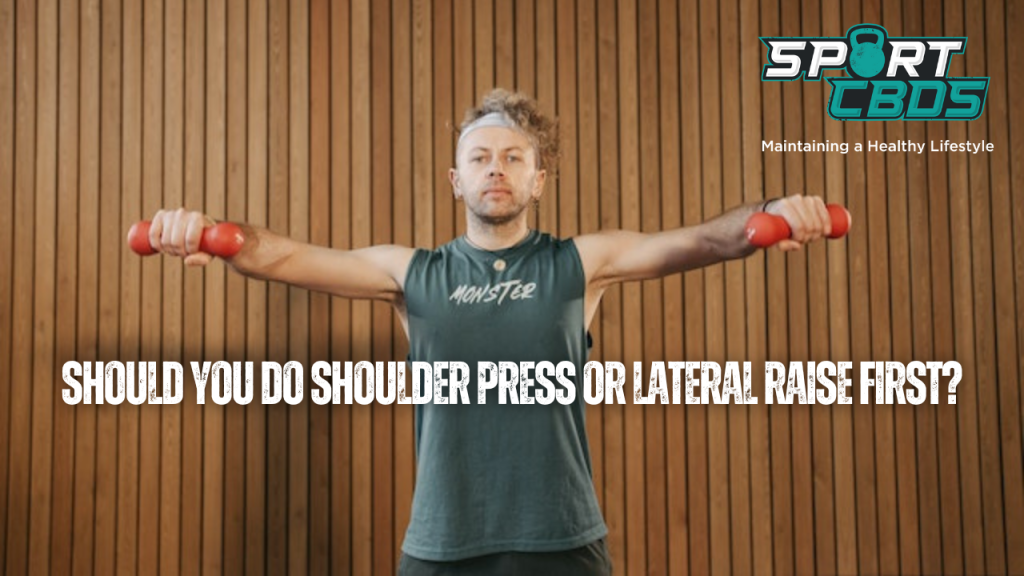
Why Do I Feel Deadlifts in My Upper Back? Unraveling the Mystery
In the realm of strength training, few exercises are as revered and feared as the deadlift. This compound movement engages multiple muscle groups, offering a comprehensive workout in a single maneuver.
However, it’s not uncommon for individuals to experience discomfort or even pain in their upper back following a deadlift session.
This raises the question, why do I feel deadlifts in my upper back? Understanding the mechanics of the deadlift and the role of the upper back in this exercise is crucial to answering this question and ensuring a safe and effective workout.
Why Do I Feel Deadlifts in My Upper Back?
Feeling deadlifts in your upper back can be attributed to several factors. The upper back plays a crucial role in maintaining stability during a deadlift, with muscles like the trapezius and rhomboids working to keep the spine neutral and the shoulders from rounding forward under the weight of the barbell. This can lead to a significant amount of tension in the upper back during and after deadlifts. Additionally, muscle soreness or Delayed Onset Muscle Soreness (DOMS) can occur, leading to discomfort that can last for a few days. Congenital or chronic disorders like scoliosis can also affect the upper back during deadlifts. Lastly, a poorly conditioned core can contribute to upper back pain during deadlifts. If your core muscles are weak, other parts of your body, like your upper back, may have to compensate for this lack of strength, leading to potential discomfort or injury.
Understanding Deadlifts
Deadlifts are a staple in strength and conditioning programs, renowned for their ability to build muscle, increase strength, and improve athletic performance. But what exactly are deadlifts?
A deadlift is a weightlifting exercise where a loaded barbell or bar is lifted off the ground to the level of the hips and then lowered back to the ground. It’s called a “dead” lift because the weights are lifted from a “dead” or static position on the ground, without the momentum often associated with other lifts.
The deadlift targets several muscle groups, making it a highly efficient compound exercise. The primary muscles worked include:
- Hamstrings: Located at the back of your thighs, these muscles play a key role in hip extension during the deadlift.
- Glutes: These are your butt muscles, which work with your hamstrings to extend your hip.
- Lower back (Erector Spinae): These muscles run along your spine and work hard to keep your back straight during the lift.
- Upper back and traps: These muscles help maintain a strong and stable torso throughout the lift.
However, it’s important to note that while the deadlift engages these muscles, it’s not primarily an upper back exercise. If you’re feeling the strain in your upper back, it could be a sign that something is off with your form or technique.
In the next sections, we’ll delve deeper into why you might be feeling deadlifts in your upper back and how to prevent discomfort and injury during this powerful exercise.
Why You Feel Deadlifts in Your Upper Back
The upper back plays a crucial role in maintaining stability during a deadlift. The muscles in this area, particularly the trapezius and rhomboids, work to keep the spine neutral and the shoulders from rounding forward under the weight of the barbell. This is a strenuous task, and it’s not uncommon to feel a significant amount of tension in the upper back during and after deadlifts.
One reason you might be feeling deadlifts in your upper back is muscle soreness, also known as Delayed Onset Muscle Soreness (DOMS). DOMS is the pain and stiffness felt in muscles several hours to days after unaccustomed or strenuous exercise. The upper back muscles, when subjected to the intense strain of a deadlift, can experience DOMS, leading to discomfort that can last for a few days.
Another factor that could lead to upper back pain during deadlifts is the presence of congenital or chronic disorders like scoliosis. Scoliosis, a sideways curvature of the spine, can alter the way you perform a deadlift and place additional strain on the upper back.
Lastly, a poorly conditioned core can also contribute to upper back pain during deadlifts. A strong core is essential for maintaining proper form during a deadlift. If your core muscles are weak, other parts of your body, like your upper back, may have to compensate for this lack of strength, leading to potential discomfort or injury.
Related: Can I Build Big Legs Without Squats or Deadlifts? A Step-by-Step Guide
Common Mistakes When Deadlifting
Deadlifts are a complex exercise, and there are several common mistakes that can lead to upper back pain.
One of the most common mistakes is lifting weights that are too heavy. When the weight is too heavy, it can compromise your form and put undue stress on your upper back. It’s crucial to choose a weight that challenges you but doesn’t sacrifice your form.
Incorrect form is another common mistake that can lead to upper back pain. This can include rounding the back, not setting the shoulders correctly, or not engaging the core. Each of these errors can place additional strain on the upper back.
Finally, a lack of proper warm-up and cool-down can contribute to upper back pain. Warming up prepares your muscles for the workout ahead and can help prevent injury. Cooling down, on the other hand, helps your muscles recover and can reduce the severity of DOMS.
In the next section, we’ll discuss how to prevent upper back pain when deadlifting, ensuring you can continue to include this powerful exercise in your workout routine safely and effectively.
How to Prevent Upper Back Pain When Deadlifting
Preventing upper back pain when deadlifting largely comes down to four key factors: proper form and technique, core strength and conditioning, appropriate weight selection, and adequate rest and recovery.
Proper form and technique are crucial in any exercise, but especially so in a complex movement like the deadlift. This includes maintaining a neutral spine, setting your shoulders correctly, and ensuring your hips and knees move in sync. It’s often helpful to have a trainer or experienced lifter check your form.
Core strength and conditioning are also vital. A strong core helps maintain proper form during the lift and reduces the strain on your upper back. Core-strengthening exercises and overall conditioning should be a part of your regular workout routine.
Appropriate weight selection is another important aspect. Lifting too heavy can compromise your form and put undue stress on your upper back. It’s better to lift a lighter weight with proper form than a heavier weight with poor form.
Finally, adequate rest and recovery are essential. This includes both rest between sets and rest between workout days. Rest allows your muscles to recover and grow stronger. Additionally, proper nutrition and hydration can aid in recovery and help prevent muscle soreness.
Grip Strength Is A Must
Grip strength can play a significant role in why you might feel deadlifts in your upper back. A strong grip allows for better control and stability during the lift, reducing the strain on your upper back muscles. It ensures that the barbell is held securely, preventing it from moving and causing unnecessary tension in the upper back.
A study published found that grip strength training improved overall deadlift performance, which means if you’re looking to improve your grip strength, consider investing in grip strengthening tools. For example, this grip strengthener available on Amazon can be a great addition to your training routine.
Additionally, using products like those available at the Sport CBDs Store can help support muscle recovery and reduce inflammation, further aiding in reducing discomfort in your upper back after deadlifts.
Related: The Hidden Connection: Why Does My Lower Back Hurt When Doing Leg Press?
FAQs
Is it normal for your upper back to hurt after deadlifts?
While it’s common to feel some muscle fatigue or soreness after a strenuous exercise like deadlifts, persistent or severe pain is not normal and could be a sign of injury or improper technique.
Do deadlifts work your upper back?
Yes, deadlifts do work the muscles in your upper back. These muscles help stabilize your torso and maintain a neutral spine during the lift. However, the deadlift is not primarily an upper back exercise.
Are you supposed to feel deadlifts in your back?
You should feel your back muscles working during a deadlift, but you shouldn’t feel pain. If you do, it could be a sign that your form is off or you’re lifting too heavy.
How do you not feel a deadlift in your back?
Ensuring proper form, lifting an appropriate weight, strengthening your core, and adequately warming up and cooling down can help prevent discomfort in your back during deadlifts.
Final Thoughts…
Deadlifts are a powerful and efficient exercise that targets multiple muscle groups, offering a comprehensive workout in a single maneuver. However, it’s not uncommon for individuals to experience discomfort or even pain in their upper back following a deadlift session. This can be due to a variety of factors, including muscle soreness, congenital or chronic disorders like scoliosis, or a poorly conditioned core.
We’ve also discussed common mistakes that can lead to upper back pain during deadlifts, such as lifting weights that are too heavy, incorrect form, and a lack of proper warm-up and cool-down. To prevent upper back pain when deadlifting, it’s crucial to maintain proper form and technique, strengthen your core, choose an appropriate weight, and allow for adequate rest and recovery.
In the end, the key to a successful and pain-free deadlift lies in the details. By paying close attention to your form, listening to your body, and making smart training choices, you can reap the many benefits of deadlifts without the unwanted side effect of upper back pain. Remember, when it comes to weightlifting, quality always trumps quantity.
Do you feel deadlifts in your upper back? Have our tips been beneficial to your training? We’d love to hear your feedback, so please share your thoughts in the comments section below.
If you’re a sports enthusiast who utilizes CBD for optimal recovery after intense workouts, then you’ve found your tribe. Welcome to Sport CBDs, where we push our limits in training and prioritize recovery in the most effective way possible.
We regularly share workout routines on our YouTube channel and offer a range of health and fitness products designed to give you that competitive edge.
Why not explore the high-quality CBD products we proudly feature on our site? Visit the Sport CBDs Store by clicking here. In addition to CBD, we also offer an array of fitness clothing and yoga accessories to complement your active lifestyle.
Until next time, we wish you the best in your fitness journey. Remember, your progress is our passion. Stay strong and keep pushing!

Lee
Founder – Sport CBDs
Featured Image Attribution – Image by ArtPhoto_studio on Freepik

